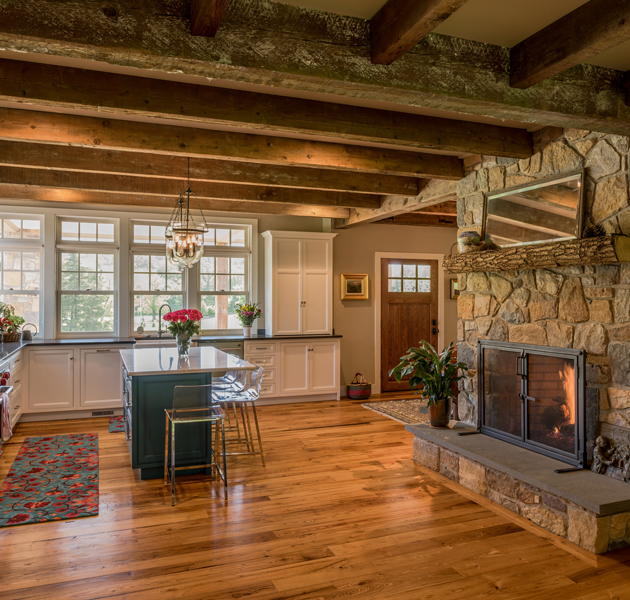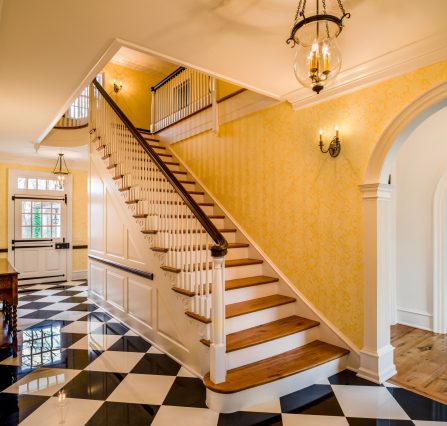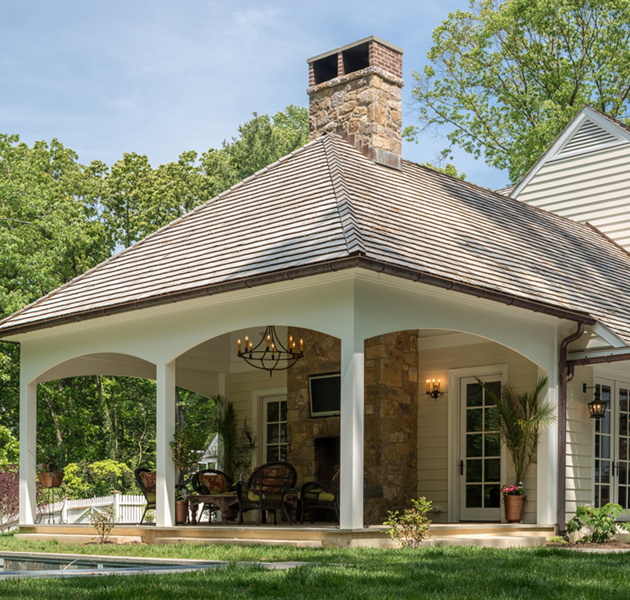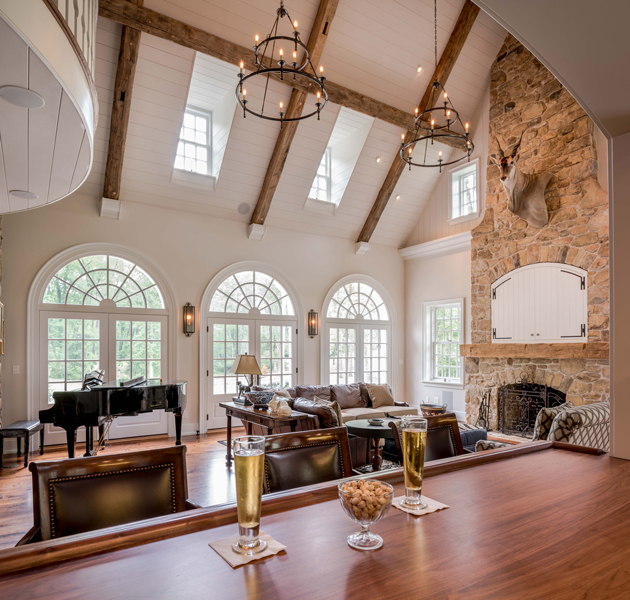Photos: Angle Eye Photography
PERIOD ARCHITECTURE
Nestled amidst rolling hills, babbling creeks, and a quilted tapestry of verdant farmland just west of Philadelphia sits Chester County, Pennsylvania, site of the American Revolutionary War’s Battle of Brandywine and the Valley Forge encampment. It’s an area that still boasts many 18th-century buildings and farmhouses that provide a look into the lifestyle and architectural vernacular of the country’s earliest days.
PRINCIPLE ONE:
A Sense of Place and History
 Establishing a sense of time is also key to authenticity. A farmhouse should tell a story by creating the impression that it was built in phases over time; historically, as a farming family succeeded and grew, their house grew too.
Establishing a sense of time is also key to authenticity. A farmhouse should tell a story by creating the impression that it was built in phases over time; historically, as a farming family succeeded and grew, their house grew too.PRINCIPLE TWO:
Organic and Salvaged Materials
PRINCIPLE THREE:
Millwork and Architectural Details

PRINCIPLE FOUR:
Indoor-Outdoor Living
Perhaps the most endearing aspect of farmhouse living is the nostalgia it inspires for a time when life was lived in close connection with nature, rather than technology. When siting a Period Architecture home, they pay close attention to environmental factors such as how they can utilize southern exposure to create sun-drenched spaces and the way the wind travels across a property. The Dutch door, for example, originally designed to let refreshing breezes in while keeping farm critters out, is very much still a celebrated feature of today’s farmhouses, both for its aesthetic value and its role as a bridge between the inside and outside. Similarly, open and covered porches, verandas, gardens, and outdoor fireplaces enhance and extend the amount of time one can spend enjoying the fresh air. PRINCIPLE FIVE:
PRINCIPLE FIVE:
Unity of Old and New
PRINCIPLE SIX:
Family-Focused Comfort and Livability
The most alluring feature of the farmhouse is also the most fundamental: its inherent comfort, livability, and family-centered appeal. Period modifies and maximize traditional layouts to accommodate modern family living by reworking servant quarters and kitchens into functional mudrooms; modifying traditional center halls and closed kitchens to create convenient, open floor plans; and incorporating master suites with luxurious closets, bathrooms, and views. Laundry rooms and extra storage are added where they never existed in the past. Stair halls, butler’s pantries, and mudrooms become key support spaces. From quaint, historic stone homes to modern, sprawling country estates, the farmhouse is an enduring beacon of authenticity, family roots, and provincial pride that beats on in the hearts of all who find a sense of home—and of self—on the winding dirt roads of the great American countryside.
From quaint, historic stone homes to modern, sprawling country estates, the farmhouse is an enduring beacon of authenticity, family roots, and provincial pride that beats on in the hearts of all who find a sense of home—and of self—on the winding dirt roads of the great American countryside.
